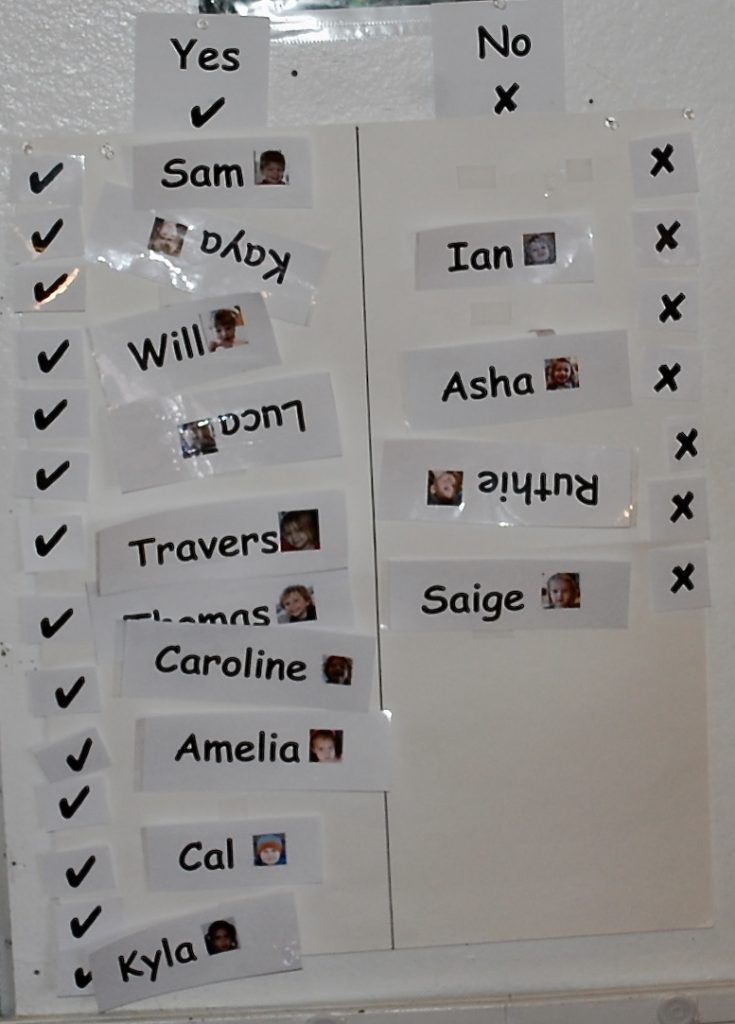The children continue to argue about the names of these two sculptures when they come up in our Face Game. With continued disagreements, sometimes rather heated, it became apparent that the children might need a place to show their thinking, a way to make their thinking visible to each other. We experimented with ways to help the children to cast their vote, a way to show them their voices are heard, to acknowledge each child’s viewpoint.
At morning meeting one day, somebody asked what was for snack that day. The answer was clementines. Many children shared that they had clementines at their houses. Mark brought over a clipboard and began recording this survey of who had clementines at their house. He showed everyone that a checkmark would show that yes, you have clementines at your house, while an X would show that no, you do not have clementines at your house. We did this same sort of survey on days when playing outside was an option for the children after morning meeting. A checkmark indicated you wanted to play outside, an X showed that you wanted to start inside.


We tried this same approach with our drippy droppy debate:
Is this Drippy Droppy?
We posted this question along with photos of each sculpture (Ugly Mess) and (Blubat). Underneath each sculpture, we set up a Yes column and a No column. The children were invited to find their name and then tape their name in the yes column if they called the sculpture drippy droppy or the no column if they did not call that sculpture drippy droppy.
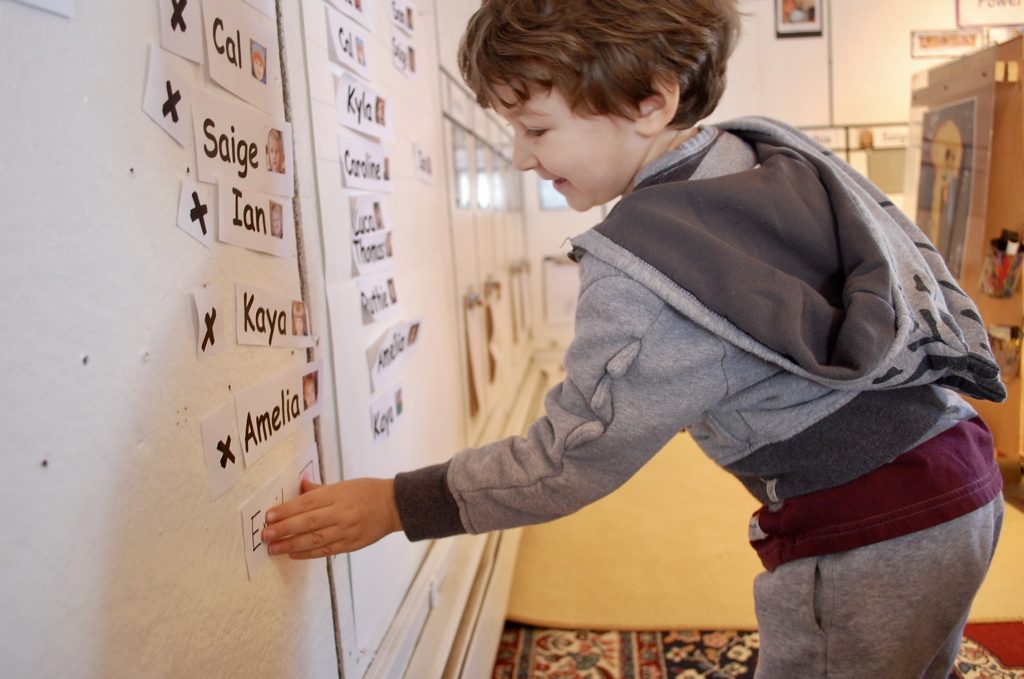
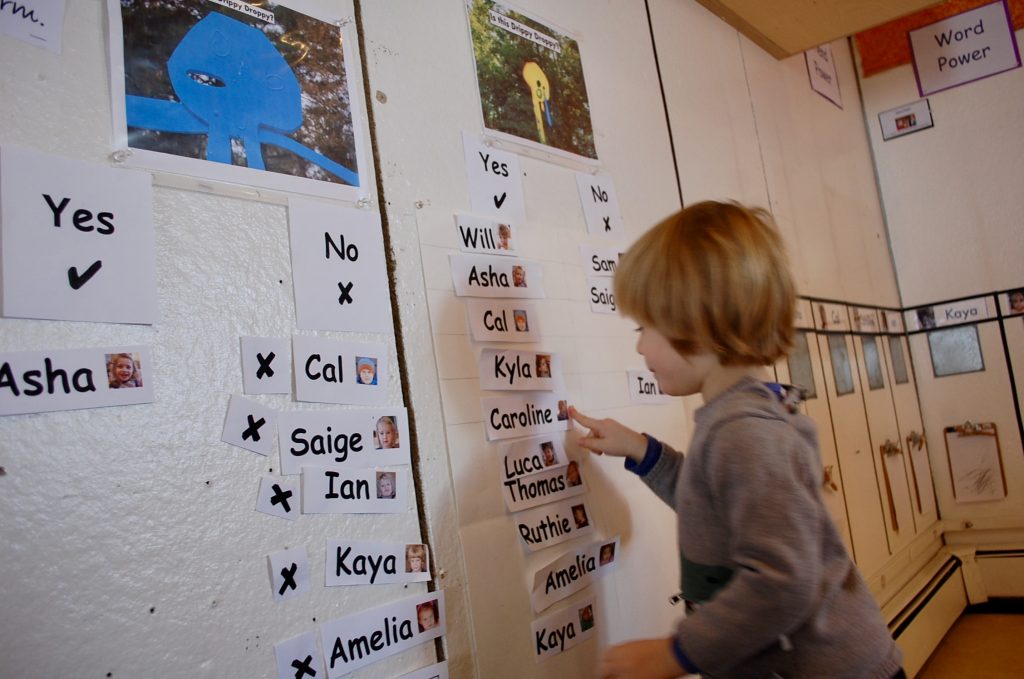
The children have really taken to this new idea of taking a survey or casting a vote. Caroline, pretending to be a princess one day, was searching for a prince. She would ask, Will you be the prince? and then make an X mark on her clipboard if the person said no. We are not sure if a prince was ever found, as her clipboard and interaction with her classmates became the new focus in her play.
Kaya also used this in his block play recently.
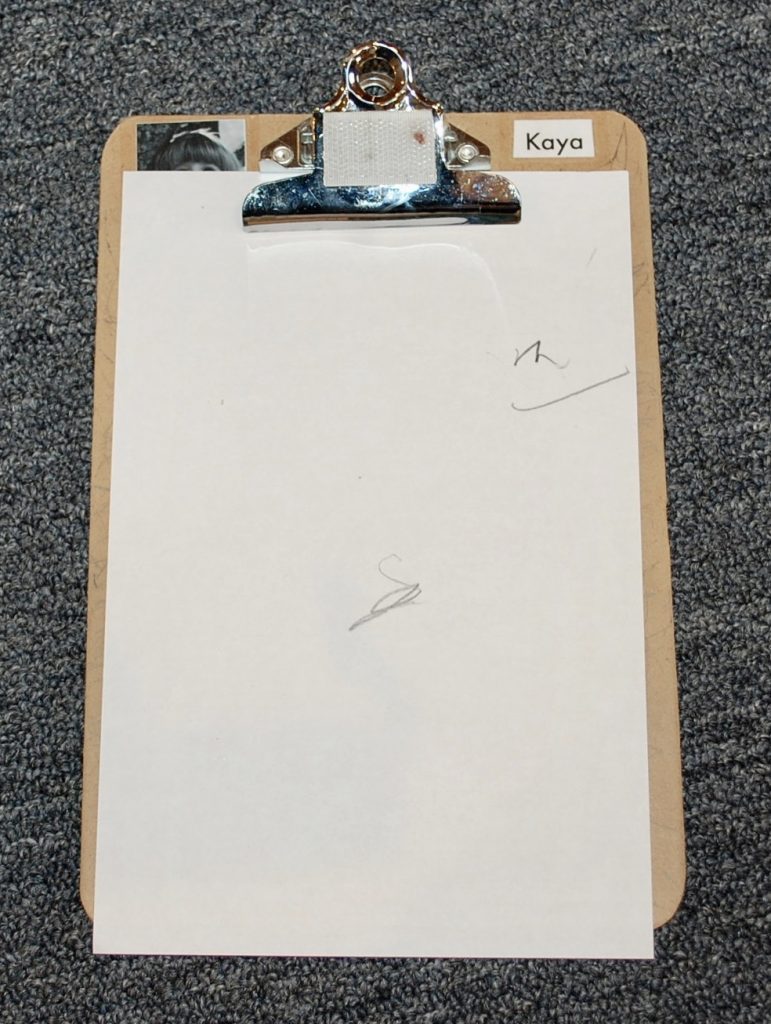
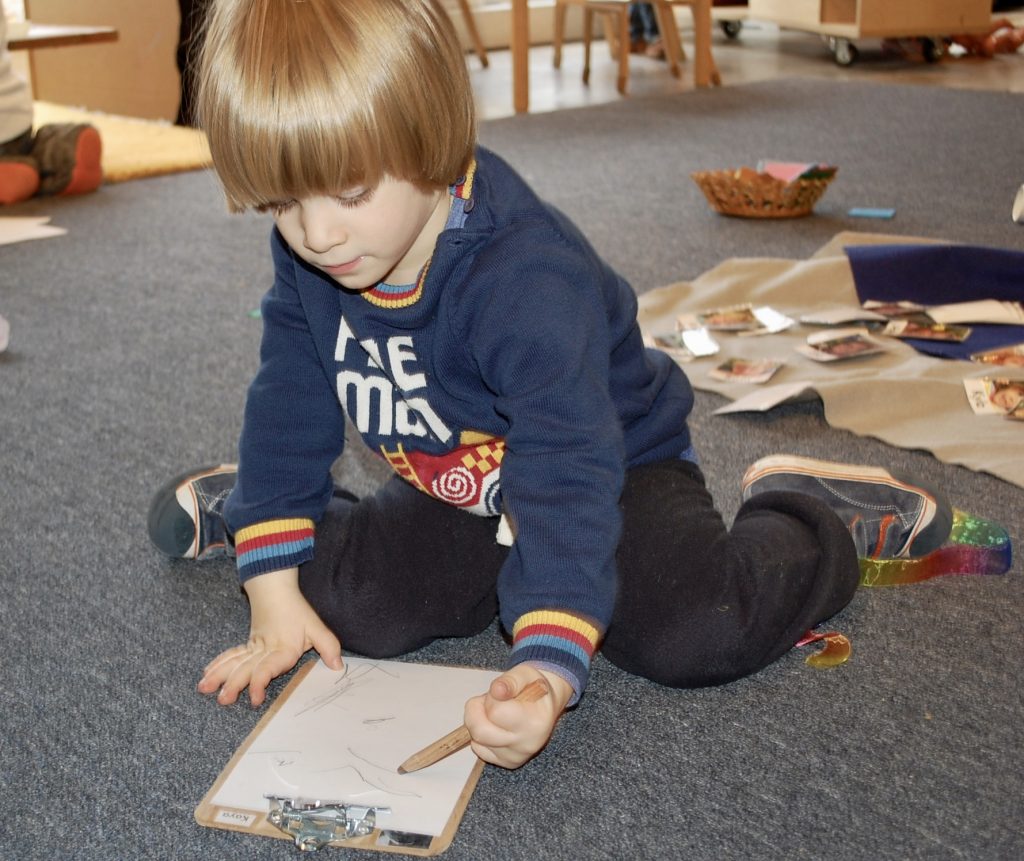
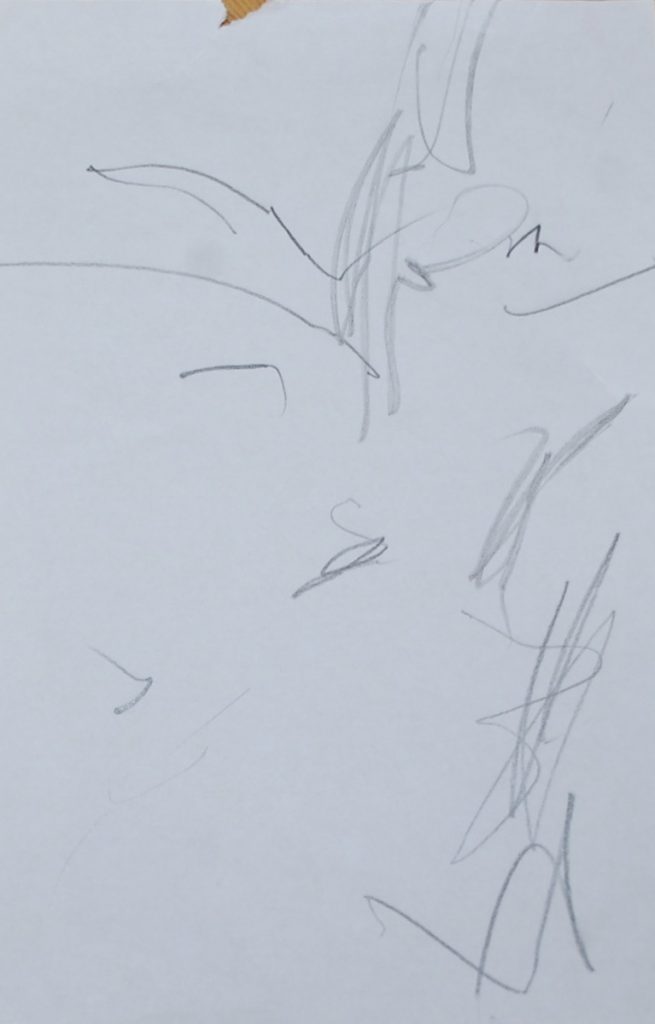
Travers and Ian are building a boat…a party boat.
Travers: We’re making a party boat…do you want to help?
Kaya: Now I need my clipboard. Ok, but first I need to write that down.
Travers: We’re building.
Kaya sits down with his clipboard and writes. He says the words slowly as he draws with his pencil. Pa-ar-ty boat. See? Travers, see? Check. It has a check. For a party boat.
Travers: A check for a party boat.
Kaya: I put an X. I maked a X.
An X? What does an X mean?
Kaya: An X means…well, first I need to write that down. A check.
Ian and Travers also pick up their clipboards and write things down as they continue to build with blocks.
On Thursday, we first tried our new survey system, as we have adapted it throughout the week. Each child now has their name available, located above their clipboard, to velcro onto a question or survey as they come up. Our first one,
Is this DrippyDroppy?

has produced surprising results… (pictured to the right)
Although we thought that the children all agreed and everyone called this sculpture Drippy Droppy, we were reminded of the many factors that may influence the vote of a three-year-old.
